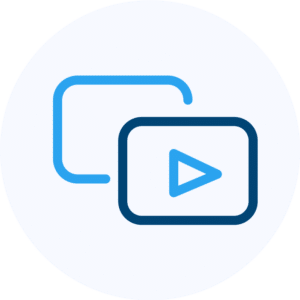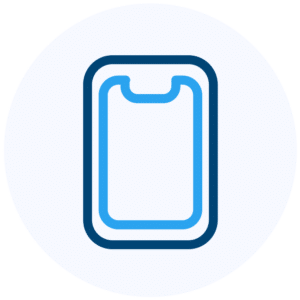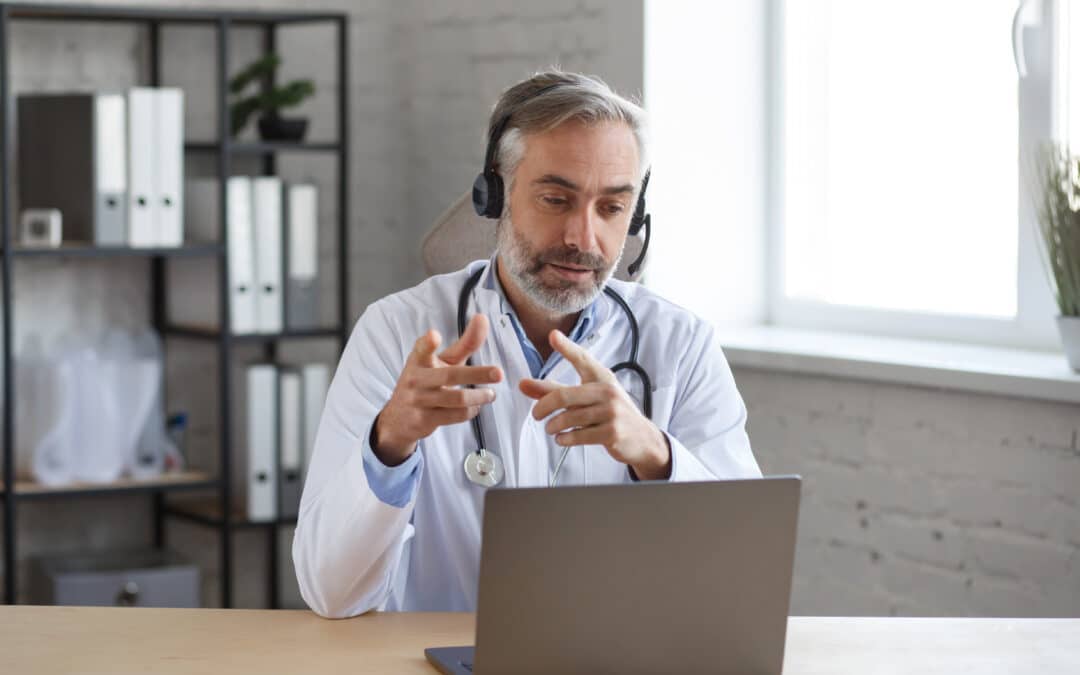Two years after the pandemic’s onset, telehealth usage remained above
20%
While this shift has proven beneficial and convenient in numerous ways, it’s also created some confusion as the lexicon of healthcare terms has expanded. Questions abound, such as “what is telehealth vs telemedicine?” and “what is mHealth?” These terms are bandied about with such frequency that they can be used as shorthand and lose some of their meaning. But it’s important to understand what they encompass, such as increasingly utilized services like remote patient monitoring.
Defining Telehealth and Telemedicine
It’s no wonder why care models starting with “tele” get mixed up, especially when the U.S. Department of Health and Human Services equates telehealth with telemedicine. But according to the American Academy of Family Physicians (AAFP):
“Telemedicine is the practice of medicine using technology to deliver care at a distance, over a telecommunications infrastructure, between a patient at an originating (spoke) site and a physician, or other practitioner licensed to practice medicine, at a distant (hub) site.”
Telehealth refers to the actual technologies, services, and tactics that support at-a-distance healthcare delivery and virtual medical, health, and education services. The AAFP explains:
“Telehealth is different from telemedicine in that it refers to a broader scope of remote healthcare services than telemedicine. While telemedicine refers specifically to remote clinical services, telehealth can [also] refer to non-clinical services such as provider training, continuing medical education or public health education, administrative meetings, and electronic information sharing to facilitate and support assessment, diagnosis, consultation, treatment, education, and care management.”
When determining whether a service is telehealth vs. telemedicine, then, it helps to remember that all telemedicine is reliant on telehealth – of which there are four types.
The Four Types of Telehealth
Many varieties of telehealth exist, but the following are its main categories, each with its own benefits and level of patient support.

Live video conferencing
The most well-known telehealth category centers around the technology that office workers, families, and friends started using regularly during COVID: live, two-way, video-based meetings. Clinicians virtually meet with patients, saving commute time and broadening access to individuals who live in rural areas or have disabilities that prevent them from coming to a physical location.

Asynchronous video (aka “store-and-forward”)
Another form of telehealth that’s particularly helpful in areas where healthcare is sparse, asynchronous video is the electronic delivery of a patient’s health history outside of real time, commonly used for consultations between a provider and specialist.
Remote patient monitoring (RPM)
RPM enables the monitoring and collection of patients’ physiologic measures outside of a traditional healthcare environment, such as at a patient’s home or office. How does remote patient monitoring work? Care managers use technology solutions to deliver remote care to patients, who then generate their own health data using monitoring devices. Vital signs are sent electronically to the physician’s office for review.

Mobile healthcare (mHealth)
The arrival of smartphones, tablets, and health-based apps spurred on the advent of mHealth. Coined in 2006, it’s a term used to describe the “emerging mobile communications and network technologies for healthcare systems,” according to an essay published that year. But defining it is not as clear-cut a task as explaining the prior three types of telehealth.
What Is mHealth?
Literally, mHealth means mobile healthcare. However, it’s common to see it used to describe multiple types of electronic care — from consumer tech like Fitbit wearables or Apple Health to even remote patient monitoring platforms. Some confusion is understandable, as the concepts of telehealth and mHealth both took off in a big way between 2007, when Apple rolled out the iPhone (the first-ever smartphone), and 2021, when as many as 85% of Americans reported owning a smartphone, according to the Pew Research Center.
69%
of all doctor-patient visits were telehealth visits at the pandemic’s peak
Telehealth and mHealth weren’t widely used until the introduction of the smartphone — and the development of more advanced RPM technology — enabled a more interactive type of healthcare, and they surged during the pandemic, when at the pandemic’s peak telehealth accounted for 69% of all doctor-patient visits, according to the Harvard Business Review.
Smartphones helped usher in this change in many ways. They not only provided the hardware, but they also helped Americans of all ages feel more comfortable with accessing health information electronically.
mHealth: The Evolution of a Term
Given these changes in technology and public perception, some authorities have worked to better define just what mHealth is, and how it fits into the structure of care delivery.
“There are various definitions of mHealth,” write the authors of an article published in Healthcare Informatics Research.
“For example, mHealth has been defined as ‘mobile computing, medical sensor, and communication technologies for healthcare.’”
“Alternatively,” the article continues:
“mHealth may mean the use of mobile devices to monitor or detect biological changes in the human body, while device management entities, such as hospitals, clinics, or service providers, collect data and use them for healthcare and health status improvement.”
The Global Observatory for eHealth of the WHO further defines mHealth as:
“Medical and public health practice supported by mobile devices, such as mobile phones, patient monitoring devices, personal digital assistants, and other wireless devices.”
Some of those definitions run pretty close to telehealth. But just like in the case of telehealth vs. telemedicine, the two overlap and yet are still distinct.
What’s the Difference Between mHealth and Telehealth?
More simply put, mHealth refers to devices that health-minded individuals like consumers or employees use to keep track of their own health, while telehealth is a clinical methodology that applies accepted models like RPM and chronic care management (CCM) to actively manage the health of patients with diagnosed health conditions. In the cases of RPM and CCM, this is for diagnosed and mostly chronic conditions, as opposed to mHealth’s focus on personal fitness and wellbeing.
Telehealth incorporates devices that collect and transmit personal health information (PHI), while mHealth’s devices do not. Patients can generally purchase mHealth devices over the counter. Telehealth devices, however, are used in CCM, such as RPM, and ordered through a durable medical equipment or home medical equipment supplier.
How Does Remote Patient Monitoring Work?
RPM, then, is strictly a telehealth application. It collects and transfers critical data from the patient’s bed to the clinician’s electronic health record (EHR) system, enabling at-home care for patients across the country.
Today, RPM devices like blood pressure monitors and glucometers are used mostly in the context of chronic care management. As such, care delivered with these devices is often part of a strictly defined care regimen, such as:
- Transitional care management to treat high-risk patients in their 30-day post-discharge period
- Principal care management for people with one high-risk condition.
- Chronic care management to treat patients with at least two chronic conditions.
- Remote therapeutic monitoring to offer RPM services specific to musculoskeletal or respiratory conditions.
Like mHealth devices, some RPM devices can encourage patients to take a greater stake in their own personal health — a key benefit for chronic care patients, where an overriding goal is the prevention of readmission or the development of comorbidities.
Learn More About Telehealth Solutions
Although it can still take further examination at times to determine what’s considered telehealth vs. telemedicine, providers are increasingly using the rise of mHealth as a tool to better engage patients in these forms of care and drive the kind of long-term outcomes that are essential to meeting patient care goals.
If your organization is interested in leveraging telehealth to expand your capacity for at-home patient care, we can help you find a solution that works best for your specific needs.
Contact a CareSimple specialist today to learn more.
